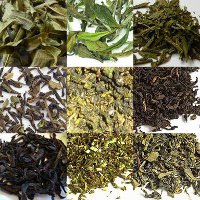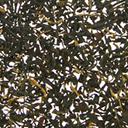Why Style? What Exactly Is A Style Of Tea?
Last Updated: Apr. 16, 2013

Different styles of tea.
On RateTea we classify different types of tea by style; you can browse the numerous styles, which are arranged hierarchically, from the style at the top of each page. We describe as styles of tea both broad categories like black tea or green tea, and specific types like English breakfast, dragon well, or silver needle. There are so many different words that can be used to classify tea; you may wonder why we chose to use the word "style", rather than other possible words, like "variety", "type", "kind", "class", or "category".
This page explains why we picked the word "style", which is not the standard in the tea industry. Before making an unusual or non-standard choice of word in a business or organization, it is important to have a strong justification for the choice; we believe we have such a justification here.
Style vs. region, grade, and other classifications of tea
Central to how teas on RateTea are classified is the idea of separating the idea of style from region. We want to classify tea both by where it is produced and how it is produced. Dictionary.com (based on the Random House Dictionary) provides us with a relevant definition of style:1. a particular kind, sort, or type, as with reference to form, appearance, or characterThe word style, and its common definition, captures exactly what we want to capture here: a kind, sort, or type of tea, but specifically with reference to its form, appearance, or character (which for tea, includes aroma and flavor as well).
 The Darjeeling region.
The Darjeeling region.The relationship between style and grade
There is a system of different grades of tea, which is used for black teas, particularly those produced outside of China. Grade refers to the size of leaf, and to some degree, the quality of the tea: grade captures whether the tea is whole or broken, and how fine or small the pieces are that the tea is broken into. Grades of tea include OP(orange pekoe), or souchong, as well as complex classifications like FTGFOP, and broken-leaf classifications like BOP(broken orange pekoe). These grades do not correspond in most cases to styles of tea as classified on our site: most of our categories of black tea styles include a broad range of different grades. However, there are a few exceptions, such as Lapsang Souchong, a style which is always a souchong grade tea.The term style settles questions of authenticity based on geographic location
One major point of controversy in the tea industry is the question of the authenticity of various teas, when teas are produced in the style of another named variety of tea, but in a different region which historically has not produced that tea. Due to the influence of geography and climate on flavor and other qualities of tea, these teas almost invariably taste different from teas grown in the original regions, even if the production process is replicated with great care.An example of such a tea is tea labelled as Keemun, but produced outside Anhui province. Keemun, as a name, simply refers to the name of Qimen county in that province, and the name originated as a name for tea from that county. At RateTea, in order to avoid controversy and also be as accurate as possible, we have decided to refer to these teas as being in the style of Keemun. And in general, when we classify a tea as a particular style, we make no claims to geographic authenticity: we are simply observing that the tea has been produced and marketed in a particular style ,and thus, is intended by the producers and sellers to be viewed and appreciated as that style.
Rather than debating authenticity, we prefer to refer to the style of a tea as a term that is descriptive without making any claims of the true or authentic nature of a tea. We encourage companies to make this separation as well: the practice of producing teas of a particular style in different regions can introduce diversity into tea culture. By making clear where each tea was produced, what style it was produced in, and where that style originated, tea companies can avoid accusations that they are selling counterfeit teas, and maintain transparency about exactly what they are selling.


